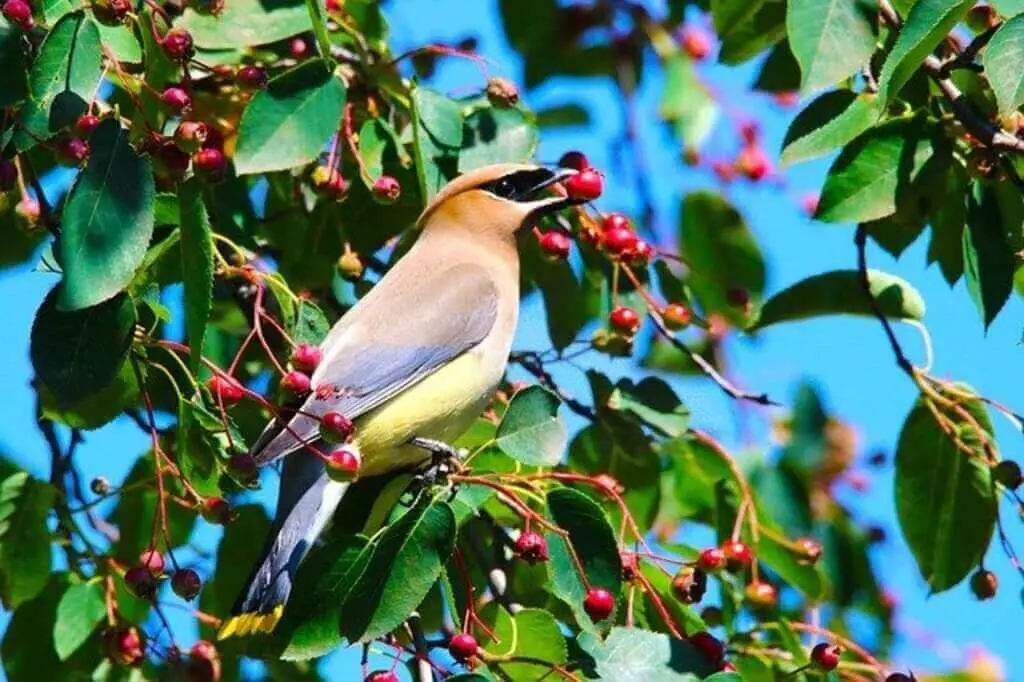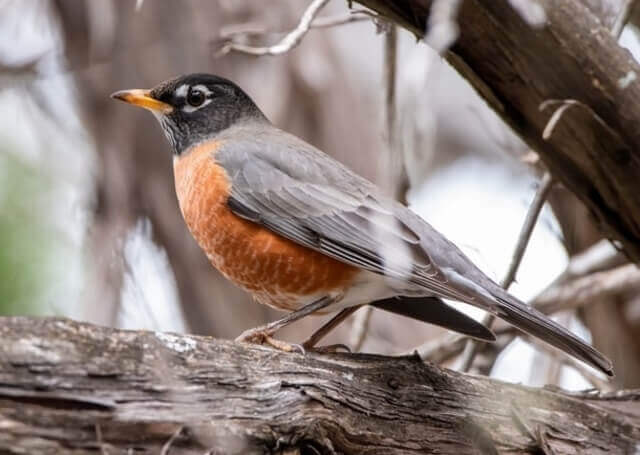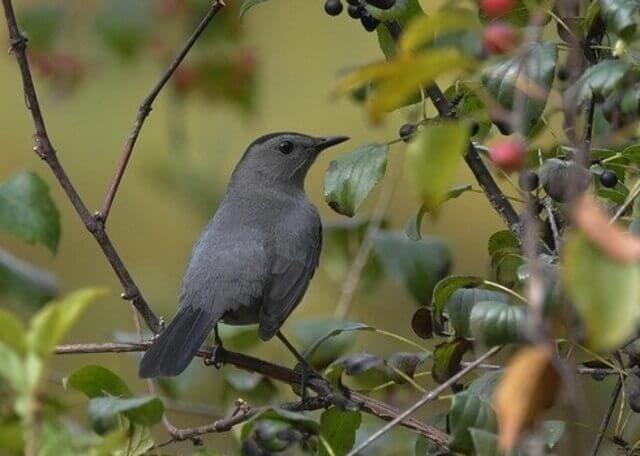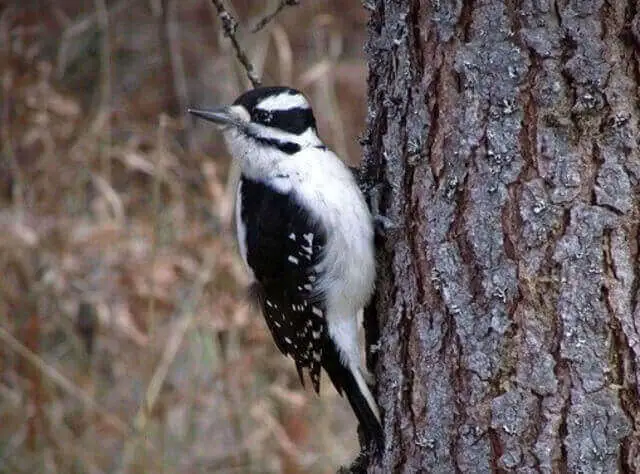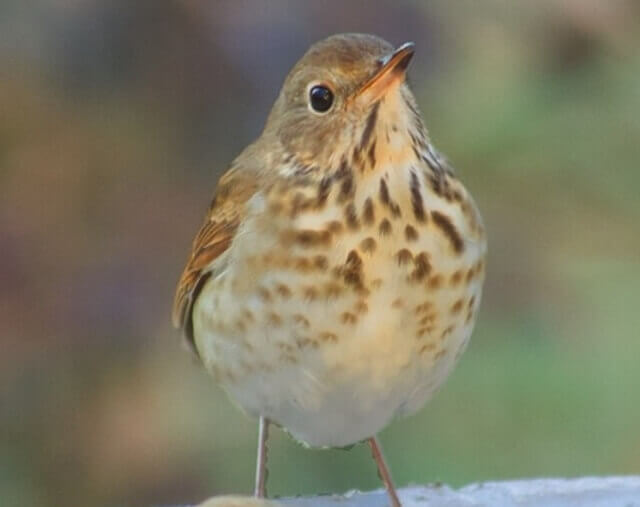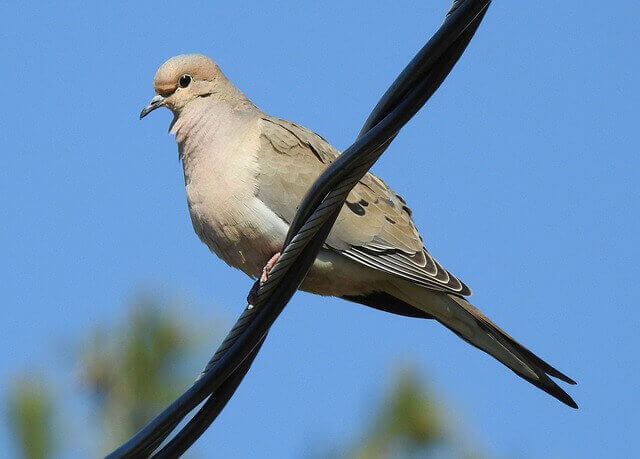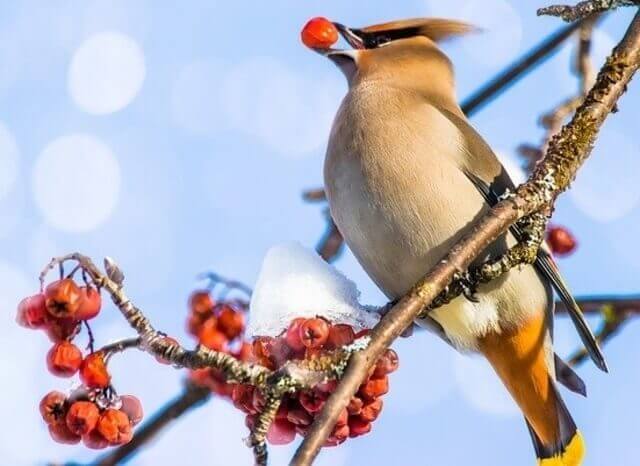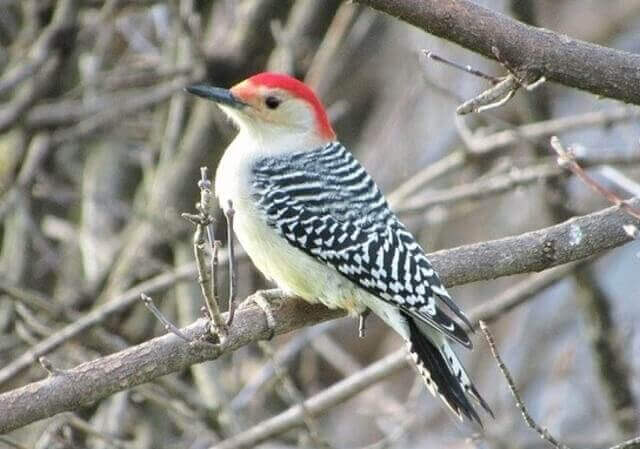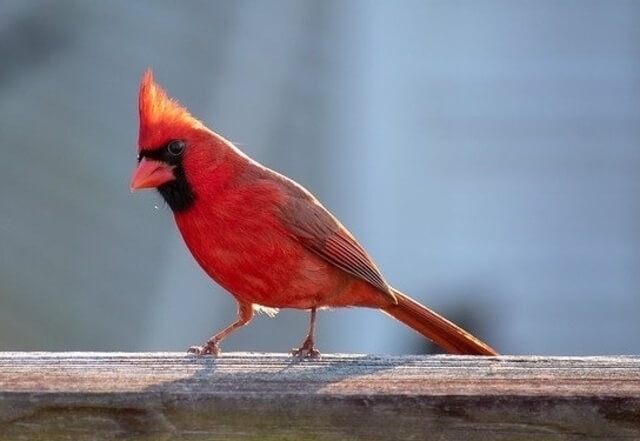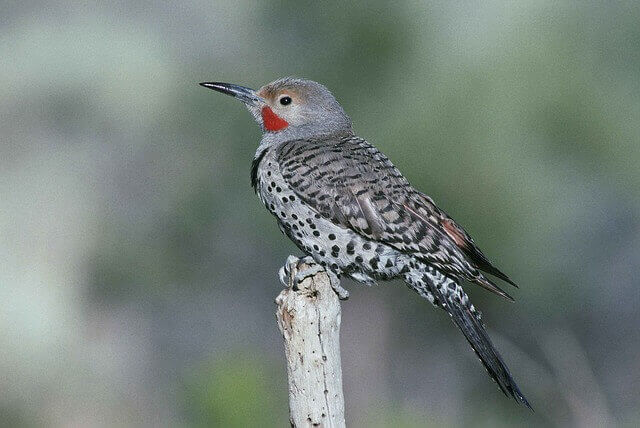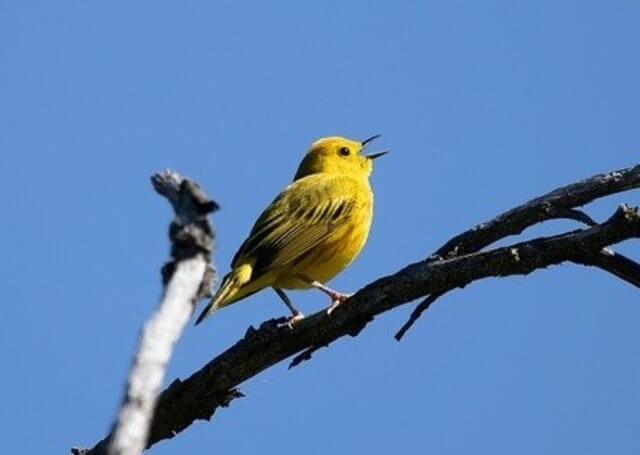Ever wondered which birds are snacking on those juicy serviceberries in your yard? In this article, we’ll look at 17 birds that eat serviceberries and why they can’t resist this sweet and nutritious fruit. From backyard favorites to more elusive visitors, you might be surprised at who shows up when serviceberries are on the menu.
Table of Contents
- 1 Why Birds Love Serviceberry Trees
- 2 Birds That Eat Serviceberries
- 2.1 American Robin
- 2.2 Baltimore Oriole
- 2.3 Gray Catbird
- 2.4 Hairy Woodpecker
- 2.5 Hermit Thrush
- 2.6 Mourning Dove
- 2.7 Cedar Waxwing
- 2.8 Eastern Bluebird
- 2.9 Eastern Towhee
- 2.10 Red-Bellied Woodpecker
- 2.11 Rose-Breasted Grosbeak
- 2.12 Northern Cardinal
- 2.13 Northern Flicker
- 2.14 Northern Mockingbird
- 2.15 Yellow Warbler
- 2.16 Wood Thrush
- 2.17 Brown Thrasher
- 3 Frequently Asked Questions
- 4 Author
Why Birds Love Serviceberry Trees
The Serviceberry tree (Amelanchier) is a bird-friendly powerhouse. Native to North America, this small tree or shrub produces clusters of sweet, juicy berries that ripen in late spring to early summer—right when many birds are feeding chicks or preparing for migration. The fruit is not only delicious but packed with nutrients, making it a top choice for hungry songbirds.
In addition to offering food, serviceberry trees provide excellent cover and nesting spots thanks to their dense branches. If you’re looking to attract a wide variety of birds to your yard, planting a serviceberry is a great start.
Birds That Eat Serviceberries
American Robin
- Length: 6.7-7.5 in (17-19 cm)
- Weight: 1.1-1.4 oz (30-40 g)
- Wingspan: 9.1-11.8 in (23-30 cm)
- Range: Northeast United States, southeast Canada, parts of Central America
- Habitat: Wetlands, marshes, meadows, forest edges, suburban yards
The American Robin (Turdus migratorius) is a well-known backyard visitor across North America. Its diet is broad, including insects, earthworms, and various fruits. Among its favorite foods are serviceberries, which robins will often eat even before they fully ripen. In late spring and early summer, these berries can make up to 40% of a robin’s diet, offering vital nutrients during nesting season when energy demands are high.
Baltimore Oriole
- Length: 6.7-7.5 in (17-19 cm)
- Weight: 1.1-1.4 oz (30-40 g)
- Wingspan: 9.1-11.8 in (23-30 cm)
- Range: Northeast US, southeast Canada, parts of Central America
- Habitat: Wetlands, marshes, meadows, forest edges, suburban yards
The Baltimore Oriole (Icterus galbula) is a striking migratory songbird found across the United States, Canada, and parts of Mexico during the breeding season. Known for their vibrant orange plumage and sweet, whistling songs, these birds rely heavily on fruit during warmer months. Serviceberries play an important role in their summer diet, making up to 25% of what they eat. Rich in nutrients, the berries provide essential fuel during nesting and rearing. With the serviceberry season stretching from June through September, it’s a great time to spot orioles foraging among the branches.
Gray Catbird
- Length: 8.3-9.4 in (21-24 cm)
- Weight: 0.8-2.0 oz (23.2-56.5 g)
- Wingspan: 8.7-11.8 in (22-30 cm)
- Range: Eastern United States and Canada, and the Great Lakes region
- Habitat: Deciduous forests, swamps, shrub or tree thickets, hedges along roadsides and farms, and backyards with tall bushes near homesites
The Gray Catbird (Dumetella carolinensis) is a sleek, medium-sized songbird known for its cat-like calls and impressive mimicry. Found throughout North, Central, and parts of South America, this bird thrives in dense shrubs and woodland edges. While insects make up the bulk of its diet, it also feeds on a wide variety of berries and fruits. Serviceberries, also called Juneberries—are a particular favorite thanks to their sweet, nutrient-rich juice. Catbirds are often among the first to visit serviceberry bushes when the fruit begins to ripen.
Hairy Woodpecker
- Length: 7.1-10.2 in (18-26 cm)
- Weight: 1.4-3.4 oz (40-95 g)
- Wingspan: 13.0-16.1 in (33-41 cm)
- Range: Eastern region of Canada and southward into Texas, Oklahoma, Arkansas, Missouri, Kansas, Iowa, and further westward into New Mexico and Arizona.
- Habitat: Lives mainly in forests and woodlands, parks or other types of residential areas.
The Hairy Woodpecker (Picoides villosus) is a versatile bird found across North America, Europe, and parts of Asia, extending as far south as Mexico. Known for its striking black-and-white plumage, this woodpecker primarily hunts for ants and other insects, often high in the trees. However, these resourceful birds also enjoy a variety of fruits, including serviceberries. They can be seen either foraging for them on the ground or picking them off trees while climbing in search of insects.
Hermit Thrush
- Length: 5.5-7.1 in (14-18 cm)
- Weight: 0.8-1.3 oz (23-37 g)
- Wingspan: 9.8-11.4 in (25-29 cm)
- Range: Southern Canada to Northern Florida in the US.
- Habitat: Mature tree-covered forests or woodlands ideal for nesting sites.
The Hermit Thrush (Catharus guttatus) is a medium-sized, brownish bird found across eastern North America and northern Mexico. In summer, this thrush enjoys a diet of serviceberries, which are rich in nutrients and provide a critical food source. During its fall migration, when heading south to Central America or Mexico, the Hermit Thrush continues to feast on serviceberries, making them an important stopover food as they pass through Canada.
Mourning Dove
- Length: 9.1-13.4 in (23-34 cm)
- Weight: 3.4-6.0 oz (96-170 g)
- Wingspan: 17.7 in (45 cm)
- Range: Includes all but the southernmost regions of the United States, Canada, and Mexico.
- Habitat: Agricultural fields, grasslands, and shrubbery with trees.
The Mourning Dove (Zenaida macroura) is a gentle ground-feeding bird often seen foraging in open spaces or perched quietly in trees. While their diet mainly consists of seeds, they won’t pass up a ripe serviceberry. As these berries ripen and sweeten, mourning doves can be seen feeding on them for long stretches, taking advantage of the rich energy source before moving on to other foods. The serviceberry’s flavor and abundance make it an irresistible seasonal treat for these calm and quiet visitors.
Cedar Waxwing
- Length: 5.5-6.7 in (14-17 cm)
- Weight: 1.1 oz (32 g)
- Wingspan: 8.7-11.8 in (22-30 cm)
- Range: Southwestern United States to Canada and south through Mexico.
- Habitat: Woodlands, thickets, and gardens that provide shelter and food sources.
The Cedar Waxwing (Bombycilla cedrorum) is one of North America’s most striking songbirds, known for its sleek plumage and social nature. These birds are found year-round in parts of the Eastern United States and Canada, migrating south during the colder months. Cedar Waxwings are especially fond of fruit, and serviceberries are high on their menu. Flocks often descend on berry-laden trees in summer, feeding together with surprising coordination. Their long tongues help them pluck ripe serviceberries with ease, enjoying the sugary snack in large groups.
Eastern Bluebird
- Length: 6.3-8.3 in (16-21 cm)
- Weight: 1.0-1.1 oz (28-32 g)
- Wingspan: 9.8-12.6 in (25-32 cm)
- Range: Eastern United States and Canada.
- Habitat: Open areas with trees or bushes, such as pastures, parks, or farmlands.
The Eastern Bluebird (Sialia sialis) is a small yet vibrant songbird native to North America, commonly found across the United States and Canada. These cheerful birds thrive in woodlands, meadows, and open spaces with plenty of trees for perching and nesting. While their diet is mostly made up of insects, fruit, and seeds, serviceberries hold a special place in their hearts. Rich in nutrients, serviceberries help support the bluebird’s feather growth and reproductive health, providing essential fuel during nesting season.
Eastern Towhee
- Length: 6.8-8.2 in (17.3-20.8 cm)
- Weight: 1.1-1.8 oz (32-52 g)
- Wingspan: 7.9-11.0 in (20-28 cm)
- Range: Most of Canada east of the Rocky Mountains, all the United States east of the Rockies except for Florida.
- Habitat: Deciduous forests, old fields, parks, gardens and other green spaces.
The Eastern Towhee (Pipilo erythrophthalmus) is a large, striking sparrow found primarily in the eastern parts of North America. Their diet is quite diverse, including seeds, berries (such as cherries, mulberries, and serviceberries), and insects like beetles and grasshoppers. These birds are skilled foragers, often seen hopping along the ground or perched on branches, gleaning insects from tree bark or leaves. Serviceberries, also known as “Juneberries,” are a preferred treat, providing a nutritious and accessible food source during the warmer months.
Red-Bellied Woodpecker
- Length: 9.4 in (24 cm)
- Weight: 2.0-3.2 oz (56-91 g)
- Wingspan: 13.0-16.5 in (33-42 cm)
- Range: It lives throughout the eastern United States, as well as all of Canada.
- Habitat: Deciduous forests or mixed woods, usually near water sources such as streams, lakes, or swamps.
The Red-bellied Woodpecker (Melanerpes carolinus) is a familiar and vibrant bird found throughout North America. Easily recognizable by its striking scarlet belly and black-and-white striped back, this woodpecker uses its powerful beak and strong claws to cling to tree bark as it hunts for insects. While they’re known for feeding on beetles, ants, and other wood-dwelling insects, serviceberries also play an important role in their diet. During summer, these berries can make up about 20% of the Red-bellied Woodpecker’s diet, providing them with a valuable source of energy.
Rose-Breasted Grosbeak
- Length: 7.1-8.3 in (18-21 cm)
- Weight: 1.4-1.7 oz (39-49 g)
- Wingspan: 11.4-13.0 in (29-33 cm)
- Range: Eastern United States and Canada, and winters in Central America, South America, Mexico, and Cuba.
- Habitat: Deciduous forests to swamps to agricultural fields.
The Rose-breasted Grosbeak (Pheucticus ludovicianus) is a striking bird known for its bold black-and-white plumage and vibrant red chest. Commonly found in the Eastern United States, this bird is beloved by birders, often referred to as the “Cadillac of Birds” due to its striking appearance and charismatic nature. In suburban areas, the grosbeak can often be spotted feasting on insects and berries from ornamental trees. One of its favorite treats is the serviceberry, a sugary and nutritious berry that provides a much-needed food source, especially when other options are scarce in early spring.
Northern Cardinal
- Length: 8.3-9.1 in (21-23 cm)
- Weight: 1.5-1.7 oz (42-48 g)
- Wingspan: 9.8-12.2 in (25-31 cm)
- Range: All over the United States, and in southern Canada.
- Habitat: Meadows, forest edges, farmlands, and suburbs.
The Northern Cardinal (Cardinalis cardinalis) is easily recognized by its brilliant red plumage and is a year-round resident across the Eastern and Central United States. Known for a diet rich in seeds and insects, these vibrant birds are also fond of berries—especially serviceberries. In winter, when food becomes scarce, cardinals turn to these nutritious berries as a reliable food source. To meet their daily energy needs, adult cardinals consume around 8-10% of their body weight in food each day, an impressive survival strategy during the cold months.
Northern Flicker
- Length: 11.0-12.2 in (28-31 cm)
- Weight: 3.9-5.6 oz (110-160 g)
- Wingspan: 16.5-20.1 in (42-51 cm)
- Range: Northern Canada to the southern United States.
- Habitat: Forests, woodlands, mountain areas and even urban landscapes such as the suburbs or parks.
The Northern Flicker (Colaptes auratus) is a type of woodpecker found across Canada and the United States, primarily in areas with abundant deciduous trees. These birds typically feed on insects and spiders found in tree bark, but during the fall, when other food sources are harder to come by, they turn to serviceberries. With their long, specialized tongues, Northern Flickers are able to reach fruit on branches or insects hidden in leaves, making them well-equipped to forage even in harsher conditions.
Northern Mockingbird
- Length: 8.3-10.2 in (21-26 cm)
- Weight: 1.6-2.0 oz (45-58 g)
- Wingspan: 12.2-13.8 in (31-35 cm)
- Range: United States, Canada, and Mexico.
- Habitat: Temperate deciduous forest, scrubby woodlands, thickets and edges of marshes or other wet areas.
The Northern Mockingbird (Mimus polyglottos) is a versatile songbird found throughout North America, particularly in areas with dense trees and shrubs. Known for its territorial nature, a mockingbird’s territory can stretch from one to five acres. Their diet is varied, including insects, seeds, fruits, and berries. Serviceberries, which ripen in late summer (July to August), are a particular favorite, offering a tasty and nutritious treat during the warmer months.
Yellow Warbler
- Length: 4.7-5.1 in (12-13 cm)
- Weight: 0.3-0.4 oz (9-11 g)
- Wingspan: 6.3-7.9 in (16-20 cm)
- Range: Southern United States to Canada. Spends the winter in the Central and South America.
- Habitat: Brushy areas, marshes and thickets near streams and rivers.
Yellow Warblers (Setophaga petechia) are bright, cheerful songbirds that are common across North America, especially during migration. Though they are primarily insectivores, these small birds will eagerly feast on serviceberries when insects are harder to find. During their migratory journey, yellow warblers will gorge on berries, building up crucial fat reserves to sustain them as they travel south for the winter months. Serviceberries are an important fuel source, helping them stay energized for the long flight ahead.
Wood Thrush
- Length: 7.5-8.3 in (19-21 cm)
- Weight: 1.4-1.8 oz (40-50 g)
- Wingspan: 11.8-13.4 in (30-34 cm)
- Range: Eastern United States and Canada. Winters in Central America, South America, or Cuba.
- Habitat: Deciduous forests, thickets, and swamps.
The Wood Thrush (Hylocichla mustelina), a medium-sized songbird native to the Eastern United States, is known for its rich, melodious song. Like its close relative, the American Robin, the Wood Thrush has a varied diet that includes worms, insects, and a variety of fruits and berries. Serviceberries are a particular favorite, often eaten in early spring when they are still tart. These birds are drawn to serviceberries in large numbers, feasting on them until they’ve had their fill, despite the fruit’s sourness.
Brown Thrasher
- Length: 9.1-11.8 in (23-30 cm)
- Weight: 2.1-3.1 oz (61-89 g)
- Wingspan: 11.4-12.6 in (29-32 cm)
- Range: Canada, Southeastern US, and Mexico.
- Habitat: Forests, shrublands, grasslands, and wetlands as well as near streams and lakes.
The Brown Thrasher (Toxostoma rufum) is a striking songbird native to North America, known for its loud, rolling trill and its habit of beating on branches to communicate. This medium-to-large bird has a varied diet, and serviceberries are a favorite when they’re in season, from July to September. Thrashers will eagerly seek out ripe berries, and if they can’t find any still on the branches, they’re not shy about picking them up from the ground once they’ve fallen.
Frequently Asked Questions
Do hummingbirds like serviceberry?
The Serviceberry tree blooms small white flowers which attract insects. Hummingbirds enjoy feeding on the insects, as well as the nectar of these blossoms because they are high in sugar, making them a reliable food source for hummingbirds during winter when other sources may be scarce.
Do bluebirds eat Serviceberries?
Bluebirds will enjoy eating serviceberries when they are available, but do not need to rely solely on them for sustenance. They also feed on insect larvae and insects such as ants or caterpillars that the serviceberry tree attracts.
Are serviceberries messy?
Serviceberry trees can be a pain to maintain. Some people may think that Serviceberry trees are messy because of the fallen leaves on the ground during fall time. The dried out leaves will stick to your shoes or track into your house. And when you shake them off outside it will scatter more of those tiny brown pieces everywhere!
How tall does a serviceberry tree get?
Serviceberry trees are deciduous, meaning they lose their leaves in the fall. The size of a serviceberry tree can vary greatly depending on factors such as climate and soil conditions. In the Midwest, where serviceberries grow best, a typical height is 15-25 ft., with a diameter of 3-4 ft.
Which serviceberry is best for birds?
The downy serviceberry is a wonderful option for your backyard, orchard, or home. They are very fast growing and hardy. The fruit of the downy serviceberry is edible by humans as well as birds which means they are great for attracting them to your yard with food!

